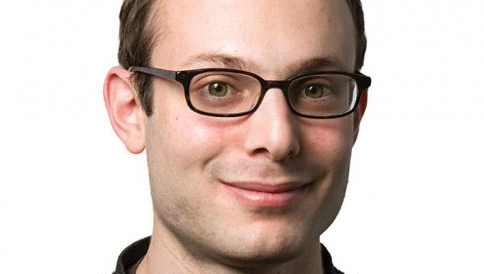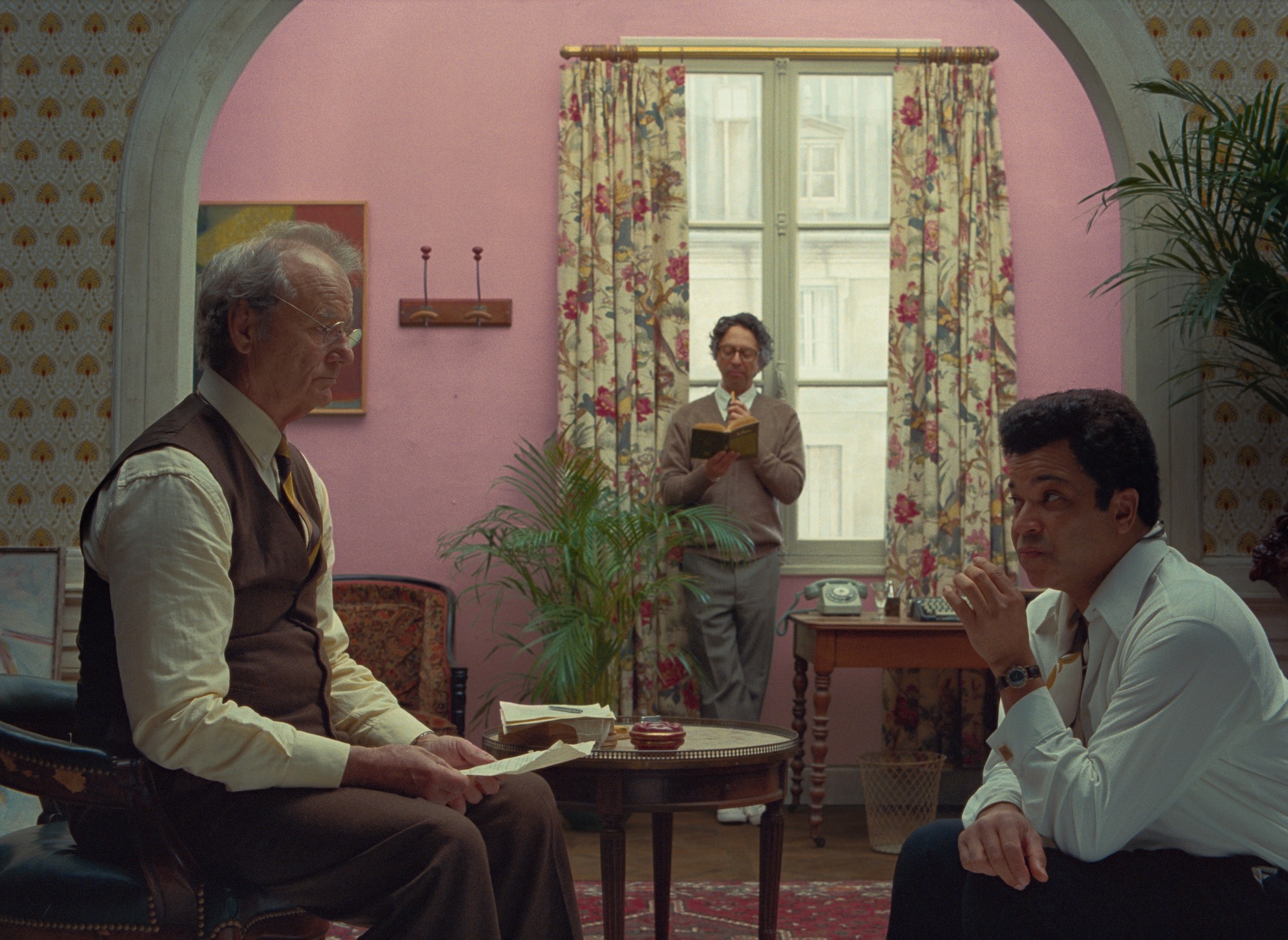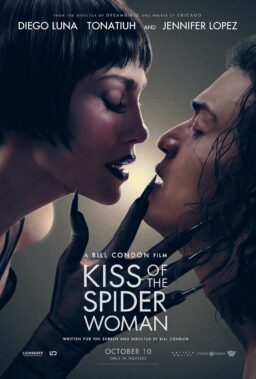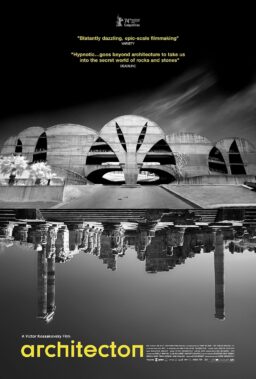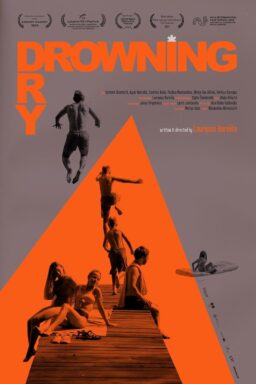Wes Anderson’s “The French Dispatch,” a pastiche centered on the France-based magazine supplement of a Kansas daily newspaper, has finally landed in Cannes’ driveway more than a year after it was scheduled for delivery. (It’s the only film from last year’s official selection that waited for the next edition.) The good news is that it’s one of Anderson’s most ambitious films, with a densely nested structure that makes “The Grand Budapest Hotel” look positively linear. The disappointing news is that it has the fewest laughs of any Anderson movie since “The Darjeeling Limited“—although his films teem with so much detail and so many visual gags that they’re usually funnier the second time around.
Journalists were understandably excited about seeing Anderson’s take on their profession, but the newsroom conceit turns out to be mere scaffolding for a much more sweeping homage to French art and culture. The magazine is run out of a bureau in “Ennui-sur-Blasé, France,” and each section of the movie corresponds to something written in its pages. The first segment is an obituary for the editor, Arthur Howitzer Jr. (Bill Murray), who is remembered as a man who staffed his magazine with the best expatriate journalists and, after reading their stories, would give them a consistent note (“just try to make it sound like you wrote it that way on purpose”). But this isn’t a movie about the staff, even if the setup suggests it might be. After being introduced as the magazine’s resident grammarian, Elisabeth Moss, for instance, is pushed to the sidelines.
“The French Dispatch” unfolds as a literary magazine in movie form, telling three stories varied in tone, quality, and time period. In the first and best segment, Benicio del Toro plays Moses Rosenthaler, an imprisoned murderer in the 1920s who also paints modern art. (Del Toro has said that Anderson saw Michel Simon’s grizzled, uncouth hobo in Jean Renoir’s “Boudu Saved From Drowning” as the inspiration for the character.) When his prison guard (a comically severe, very funny Léa Seydoux) isn’t keeping him in line, she’s modeling for him in the nude. A painting that ostensibly depicts her becomes the toast of the art world.
It’s with the next two segments that “The French Dispatch” starts to lose its zip and humor. Frances McDormand plays a writer who abandons her objectivity when covering Zeffirelli (Timothée Chalamet), a skilled chess player and leader in the youth movement—as well as a means for Anderson to pay homage to the 1960s revolutionary milieu and the French New Wave. (Throughout the film, there are shifts in aspect ratio and between black-and-white and color.) In the third story, Jeffrey Wright plays Roebuck Wright, a writer partly modeled on James Baldwin who is able to turn an assignment for the magazine’s food section into a kidnapping saga.
The structure is actually even more complicated than that. At least two of the stories are presented at a double remove, with the writers talking about their writing. The flashbacks to Rosenthaler unfold from the perspective of the French Dispatch writer J.K.L. Berensen (Tilda Swinton) as she delivers a lecture. Wright’s Wright tells his story from the set of a 1970s TV talk show (Liev Schreiber plays the host).
Anderson, who wrote the script with Roman Coppola, Hugo Guinness, and Jason Schwartzman, keeps everything coherent, but the storytelling is unwieldy, and he has trouble sustaining the much-needed madcap energy while shuffling through so many overlapping conceits. It’s not the first Anderson film that seems to have dozens of ideas per minute, but it might be the first in which he seems to have more ideas than he knows what to do with. It’s jarring when the movie makes its final return to Murray and the magazine bureau, where a whole group of characters we’ve barely gotten to meet is waiting.
Speaking of having too many ideas, Oliver Stone’s documentary “JFK Revisited: Through the Looking Glass” played today in the festival’s newest section, which is called Cannes Première. Introducing the movie, Stone said that the documentary was an attempt to share some of the things that we’ve learned about the Kennedy assassination since the release of “JFK” 30 years ago, citing in particular the work of the Assassinations Record Review Board that convened in the mid-1990s.

Mostly, though, the movie plays like an attempt to reiterate and bolster arguments from “JFK”—a great film, but not exactly a trustworthy one on the substance itself. As Roger Ebert argued, the power of “JFK” is that it captures the national mood about the Kennedy assassination: the feeling that there’s still much that the public does not know. But cramming multiple lines of conjecture into a three-hour thriller is one thing; tossing out assorted ideas about conspiracies in a fast-paced documentary is another. I kept wanting to pause the movie, which is filled with historians and authors of various levels of credibility, to fact-check what I was hearing.
But if a pattern emerges, it’s that the arguments in Stone’s film almost always start by assuming the most paranoid possible interpretation of events, then work their way backward to the evidence. For instance, the movie makes much of the fact that Kennedy’s brain was listed after his death as weighing 1500 grams, larger than average, even though the bullet would have removed some of its mass. But of course some brains are larger than average; that’s inherent in the definition of “average.” It does not mean the brain shown in autopsy photos was a replacement brain taken from a teaching hospital, a possibility the film tries to raise.
There are other rhetorical tricks, such as according great significance to people’s offhand statements made years after the assassination. “Conspiracy theories are now conspiracy facts,” Stone, who appears in the movie, says at one point. Whatever that means.
In competition, aside from “The French Dispatch,” I saw Nanni Moretti’s “Three Floors,” about which there’s not much to say. Strictly speaking, it follows the lives of several families in an apartment complex in Rome, but it seems first and foremost concerned with setting up facile ironies, without situating them in a narrative that would allow them to make any sense. For instance: A father, convinced that a kind, elderly neighbor has abused his daughter—despite the police’s persuasive analysis of why it didn’t happen—goes looking for incriminating messages and in the process winds up having sex with the neighbor’s underage granddaughter, which leads to his being tried for statutory rape. Elsewhere, Moretti and Margherita Buy play married judges whose son kills a woman in a drunk-driving accident. And so on. Nothing that happens in this movie happens for any reason other than the screenplay’s whims, and they’re bad whims.
